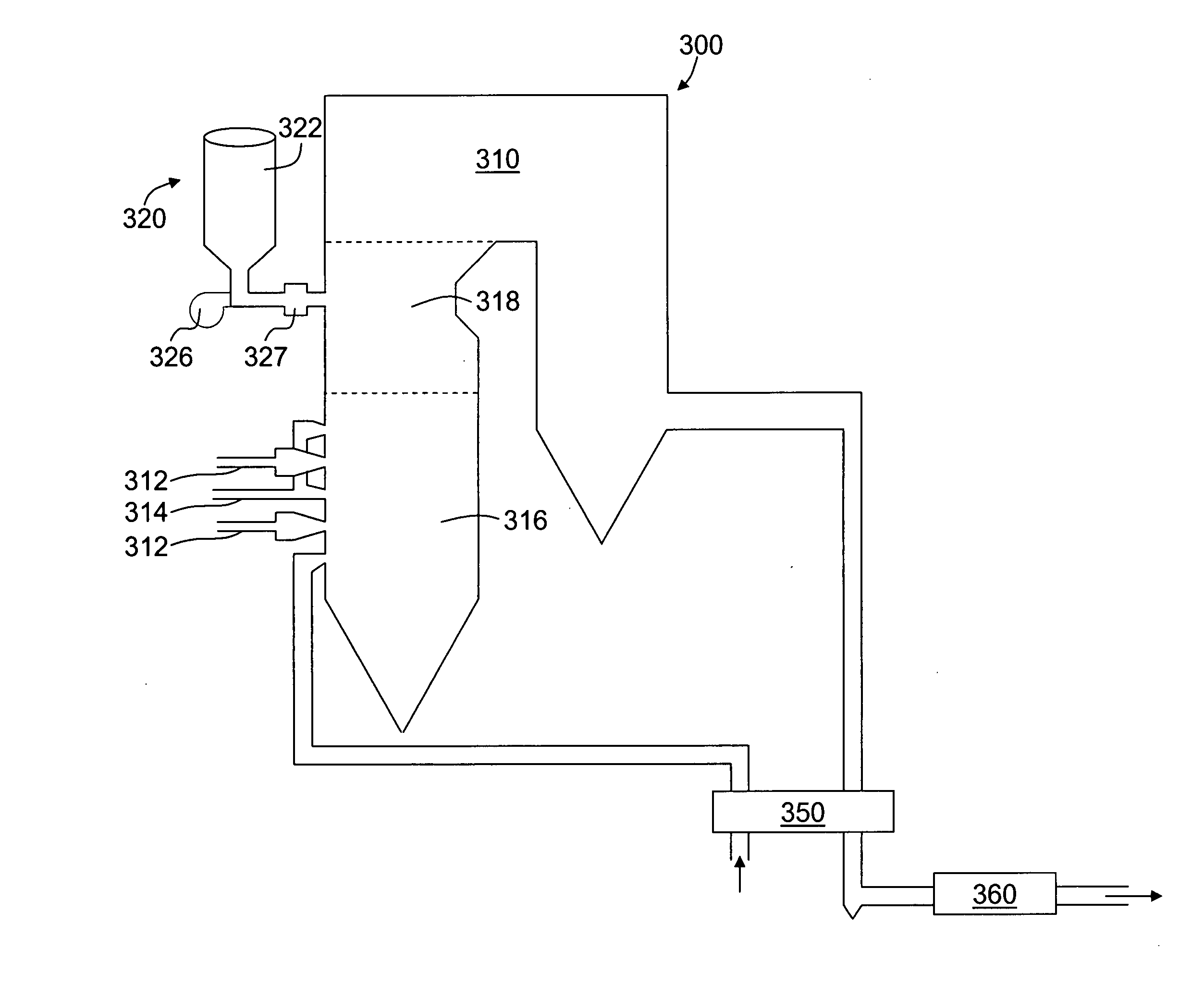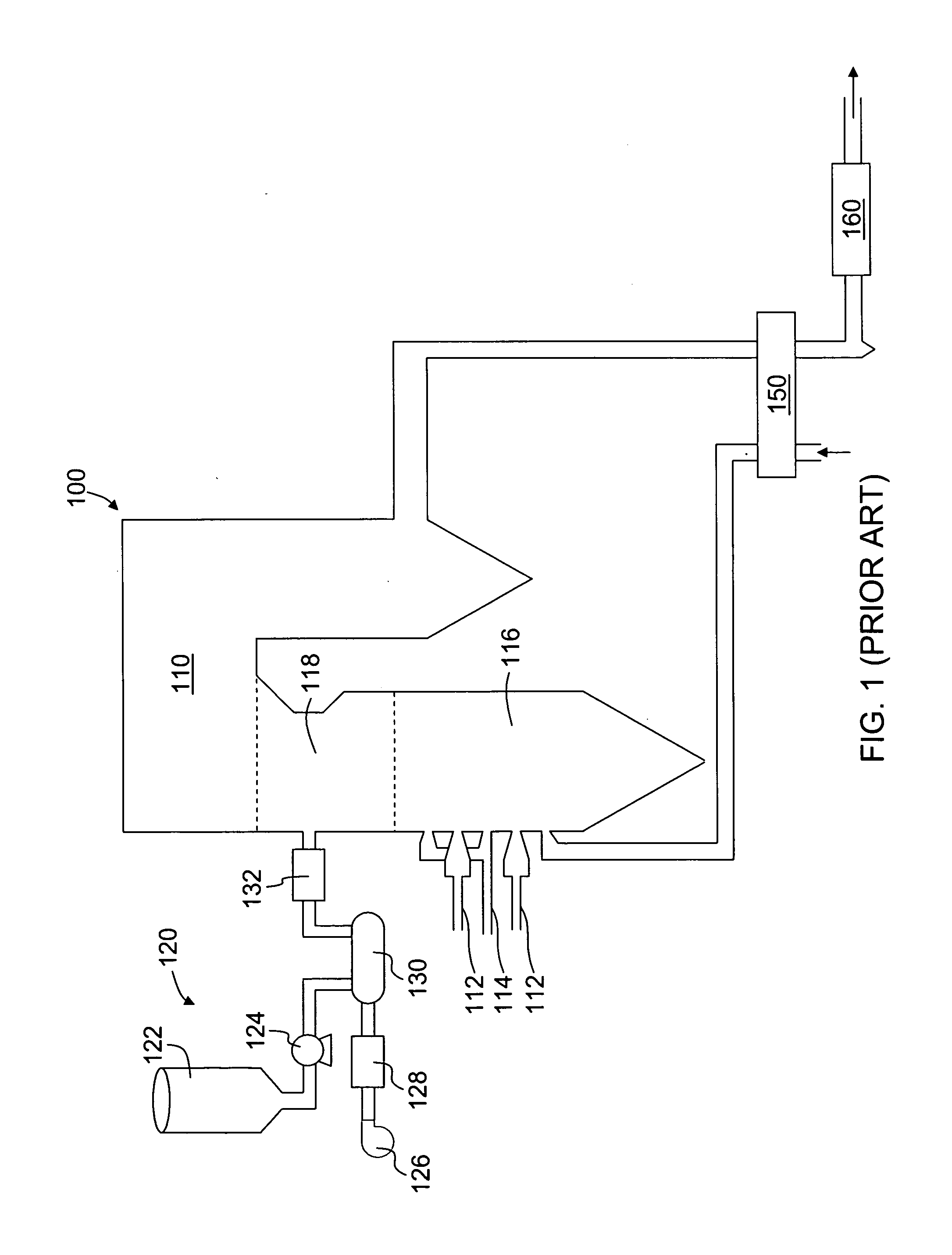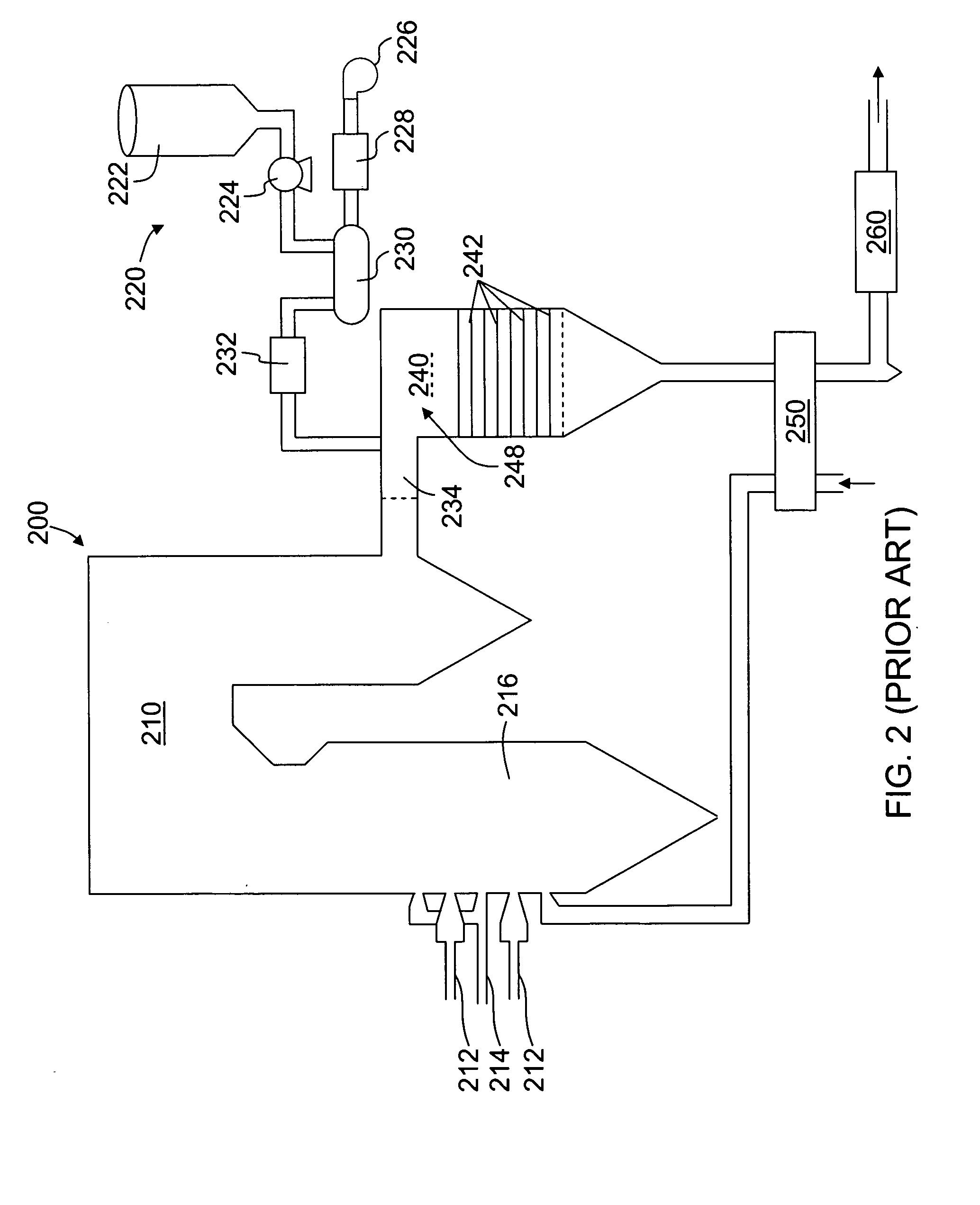Methods and systems for reducing NOx emissions in industrial combustion systems
- Summary
- Abstract
- Description
- Claims
- Application Information
AI Technical Summary
Benefits of technology
Problems solved by technology
Method used
Image
Examples
Embodiment Construction
[0015]The exemplary methods and systems described herein overcome the structural disadvantages of known Selective Catalytic Reduction (SCR) and Selective Non-Catalytic Reduction (SNCR) systems by reducing the number of components coupled within each respective system.
[0016]It should be appreciated that the term “SCR system” is used throughout this application to refer to a combustion system implementing a Selective Catalytic Reduction (SCR) control technology that injects a reagent to facilitate selectively reducing nitrogen oxides (“NOx”) emissions.
[0017]It should be appreciated that the term “SNCR system” is used throughout this application to refer to a combustion system implementing a Selective Non-Catalytic Reduction (SNCR) control technology that injects a reagent to facilitate selectively reducing NOx emissions.
[0018]FIG. 1 illustrates a schematic diagram of a known SNCR system 100. In the exemplary embodiment, SNCR system 100 includes a furnace / boiler 110, a reagent injectio...
PUM
| Property | Measurement | Unit |
|---|---|---|
| Temperature | aaaaa | aaaaa |
| Temperature | aaaaa | aaaaa |
| Temperature | aaaaa | aaaaa |
Abstract
Description
Claims
Application Information
 Login to View More
Login to View More - R&D
- Intellectual Property
- Life Sciences
- Materials
- Tech Scout
- Unparalleled Data Quality
- Higher Quality Content
- 60% Fewer Hallucinations
Browse by: Latest US Patents, China's latest patents, Technical Efficacy Thesaurus, Application Domain, Technology Topic, Popular Technical Reports.
© 2025 PatSnap. All rights reserved.Legal|Privacy policy|Modern Slavery Act Transparency Statement|Sitemap|About US| Contact US: help@patsnap.com



